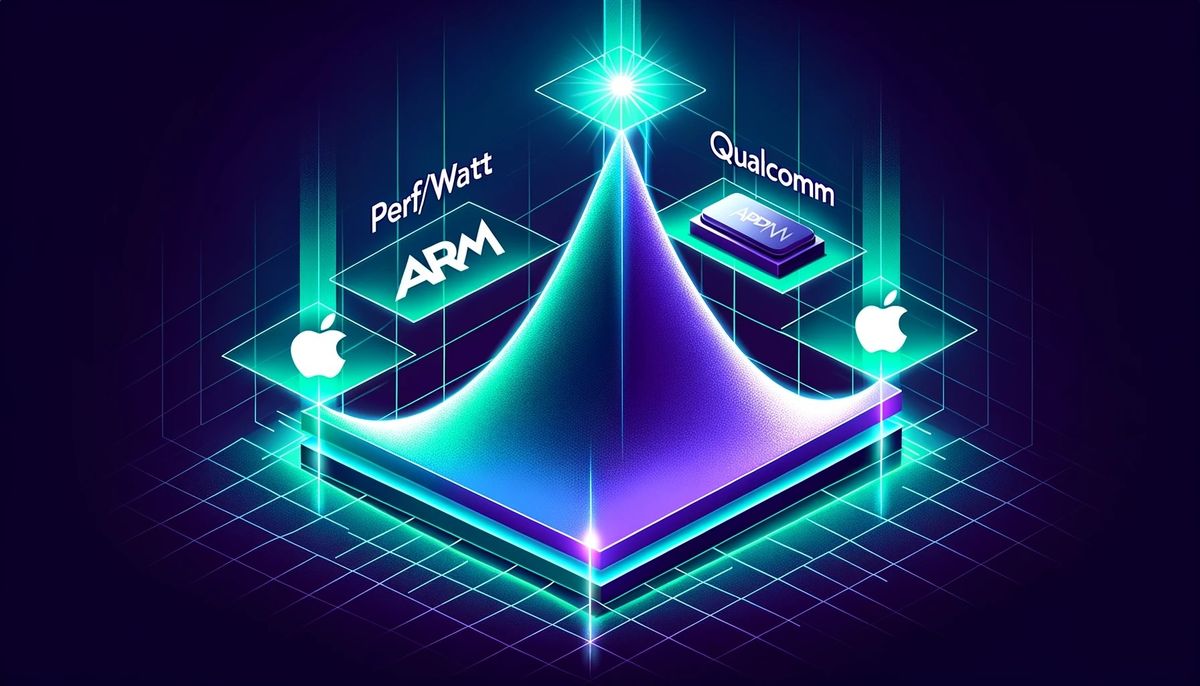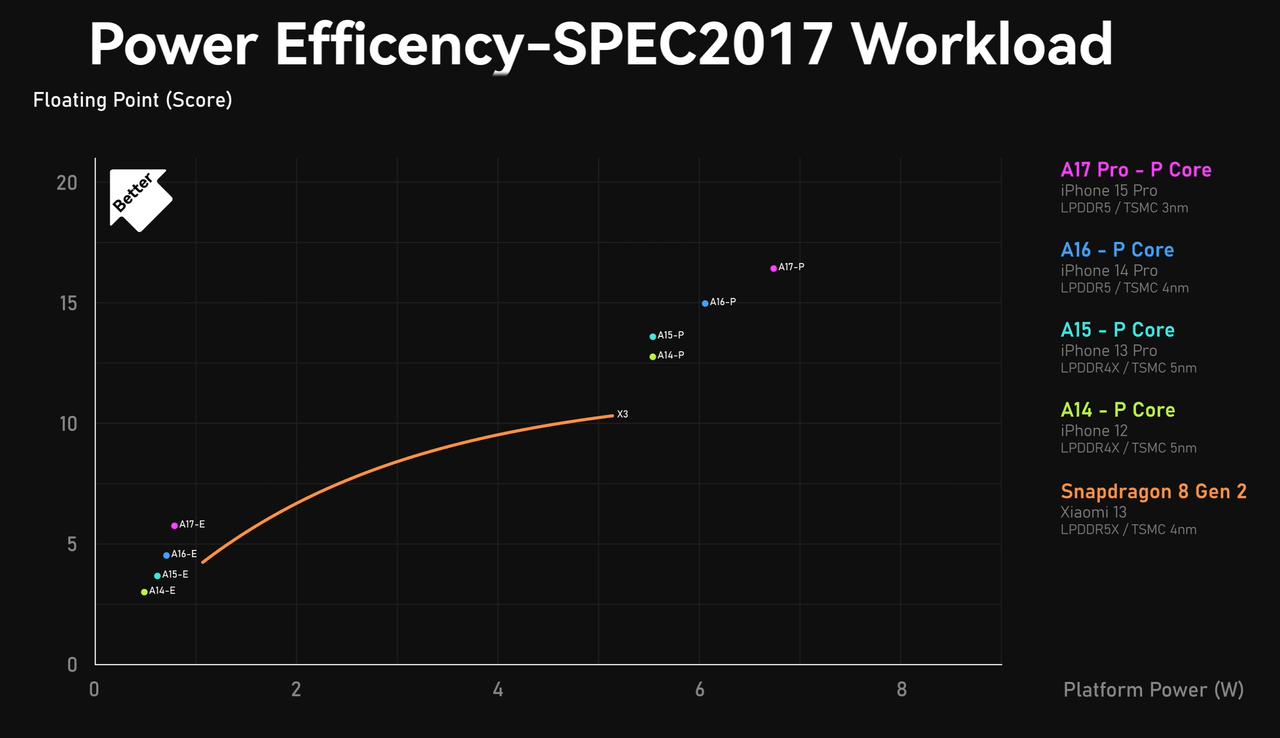Arm IPO - Tough Situations, Priced To Perfection (Pt.3)

Summary
- Arm's PPAC improvements over the past decade have been lackluster compared to competitors like Apple, raising concerns about its future success and competitiveness.
- By pushing the new bundle to customers without great PPAC improvements, Arm risks losing significant royalties in its core mobile market.
- Server CPU is potentially a promising market but the risk from Qualcomm's Nuvia could change the competitive dynamics.
- RISC-V is a risk to Arm, but mostly in the embedded system market rather than Arm's core mobile market.
In Part 3 we analyze Arm's PPAC improvements, the company's risks in the server CPU market as QCOM leverages its Nuvia assets, and the competitive threat of the open-source RISC-V.
If we strip away the performance and efficiency gains from process node upgrades, it's clear that Arm has delivered dire PPAC (Power, Performance, Area, and Cost) improvements over the past 10 years. Compared to AAPL's P-cores, Arm's ultra big cores are less performant, and compared to AAPL's E-cores, Arm's big and small cores are significantly less power efficient. This lack in progress is more alarming considering the engineering talent the firm has recruited over the same timeframe. In Part 3 we take a closer look to compare Arm's TLA CPU (and GPU) core performance against Apple (AAPL) and Qualcomm (QCOM).
With the likely continuation of poor PPAC improvements, combined with the new bundling approach we outlined in Part 1 and 2, Arm is at risk of pushing its leading mobile clients from its TLA over to its ALA, where the royalties will be less.
Unlike the mobile CPU market, in the server CPU market Arm has more to gain and less to lose as it is a nascent market. It is likely the company can deliver steady advancements but is unlikely to rival the top-tier competitors.
RISC-V is a threat but less so in Arm's core mobile market that has established an ecosystem that is highly compatible with Arm. However, RISC-V poses more of a threat in the embedded system market, that is less reliant on Arm's ecosystem.
The Importance of PPAC Improvements in Semiconductor Investments
In the semiconductor industry, a key metric that investors should pay attention to is a company's ability to make continuous advancements in PPAC. A vendor's capability to consistently drive PPAC improvements can be a strong predictor of its future success and competitiveness.
Over the past two decades, the battle between AMD and INTC has exemplified the importance of PPAC improvements. In the early 2000s, AMD took the lead with its 64-bit native multi-core CPU, masterminded by Jim Keller and his team. This advancement overshadowed INTC's offerings at the time.
However, the tables turned in the mid-2000s when INTC, under Pat Gelsinger's leadership, introduced the Core series CPUs, which showcased unmatched performance. INTC's advancements briefly stagnated following Gelsinger's departure and AMD's lack of competition. Nevertheless, with the reintroduction of Jim Keller and the launch of the Zen1 in 2017, AMD once again demonstrated the importance of Moore's law in shaping the CPU market's trajectory.
This ebb and flow in technological advancements can also be correlated with the share price performance of these companies, emphasizing the significance of maintaining a pace in line with or surpassing Moore's law.
Similarly, NVDA stands out having achieved an astounding 1000x performance gain over the past decade. This impressive rate of scaling is testament to the company's commitment to innovation, a factor that has significantly contributed to its exceptional share price performance.
In contrast, Arm's performance scaling in recent years seems to have lagged. The conventional wisdom is that, for a small core design, there isn't much room left to dramatically improve PPAC.
Despite minimal improvements to Arm's small core PPAC over the past decade, AAPL has consistently enhanced its E-Core (same method and similar power consumption as Arm's small core) with its proprietary design, by a large margin. Arm's larger core offerings have shown some growth, but, again, not at a pace that can rival AAPL. Overall, this indicates that Arm's TLA team is struggling to keep up with the design teams from the likes of AAPL, as the latter is able to continuously deliver improvements year by year, while Arm's pace of innovation has almost come to a halt.
In the following sections, we will dive into specific rivalries across the chip space.
Mobile CPU - AAPL vs. Arm standard cores
A recent performance test showcases the disparities between various chips. The power efficiency of Apple's A17 Pro chip for the iPhone 15 Pro stands in stark contrast to QCOM's Snapdragon 8 Gen 2 (SD8G2) (although not shown in the chart, MediaTek's Dimensity 9200 is built on the same TLA core as the SD8G2, so it has essentially the same performance). Notably, while Apple designs its own custom CPU and GPU, QCOM utilizes Arm's standard CPU and a custom GPU for the SD8G2. However, it's anticipated that the 8 Gen 4 (or SD8G4), slated for a Q4 2024 launch, will feature a custom CPU. MediaTek, on the other hand, relies on both Arm's standard CPU and GPU configurations.
AAPL P-core vs. Arm Ultra Big Core

The above chart illustrates the performance-per-watt curve for mobile System-on-Chip (SoC) CPUs. On the x-axis, power consumption is represented in watts, while the y-axis captures floating point performance based on the SPEC 2017 benchmark — a standardized benchmarking test for measuring CPU performance.
A few notable observations from the chart:
- Apple's superior performance: All of AAPL's P-cores (performance cores) outperform Arm's flagship ultra-big core, the Cortex X3. This is evident from the fact that Apple's A17 Pro chip boasts two of these high-performing P-cores, whereas QCOM's SD8G2, which is based on the Cortex X3, incorporates only one ultra-big core. The larger area consumption of the Cortex X3 is why only one ultra-big core is present in the SD8G2.
- Concerns for Arm: Another alarming point for Arm is observed in the realm of low-power performance. Apple's E-cores (efficiency cores), tailored for optimal energy consumption, showcases a remarkable ability. It matches the low-power performance levels of Arm's cores, but crucially, at reduced power consumption. This indicates that Apple's design not only excels in high-performance tasks but also achieves efficiency-driven tasks more effectively than Arm.
The image below compares the CPU integer (referred to as INT; higher is better) and floating point (referred to as FP; higher is better) SPEC 2017 performance of AAPL P-cores and the Arm's Cortex X3 ultra big cores. The image also shows the motherboard power consumption (lower is better). Overall, for performance cores, Arm (i.e., the Snapdragon) trails behind AAPL's own custom-designed CPU core (in the A17) by about three generations, or years.




